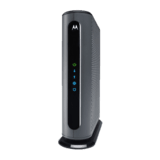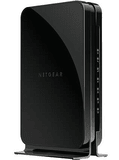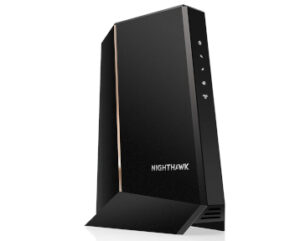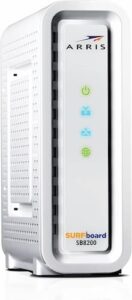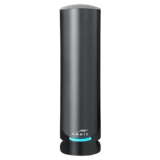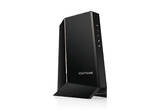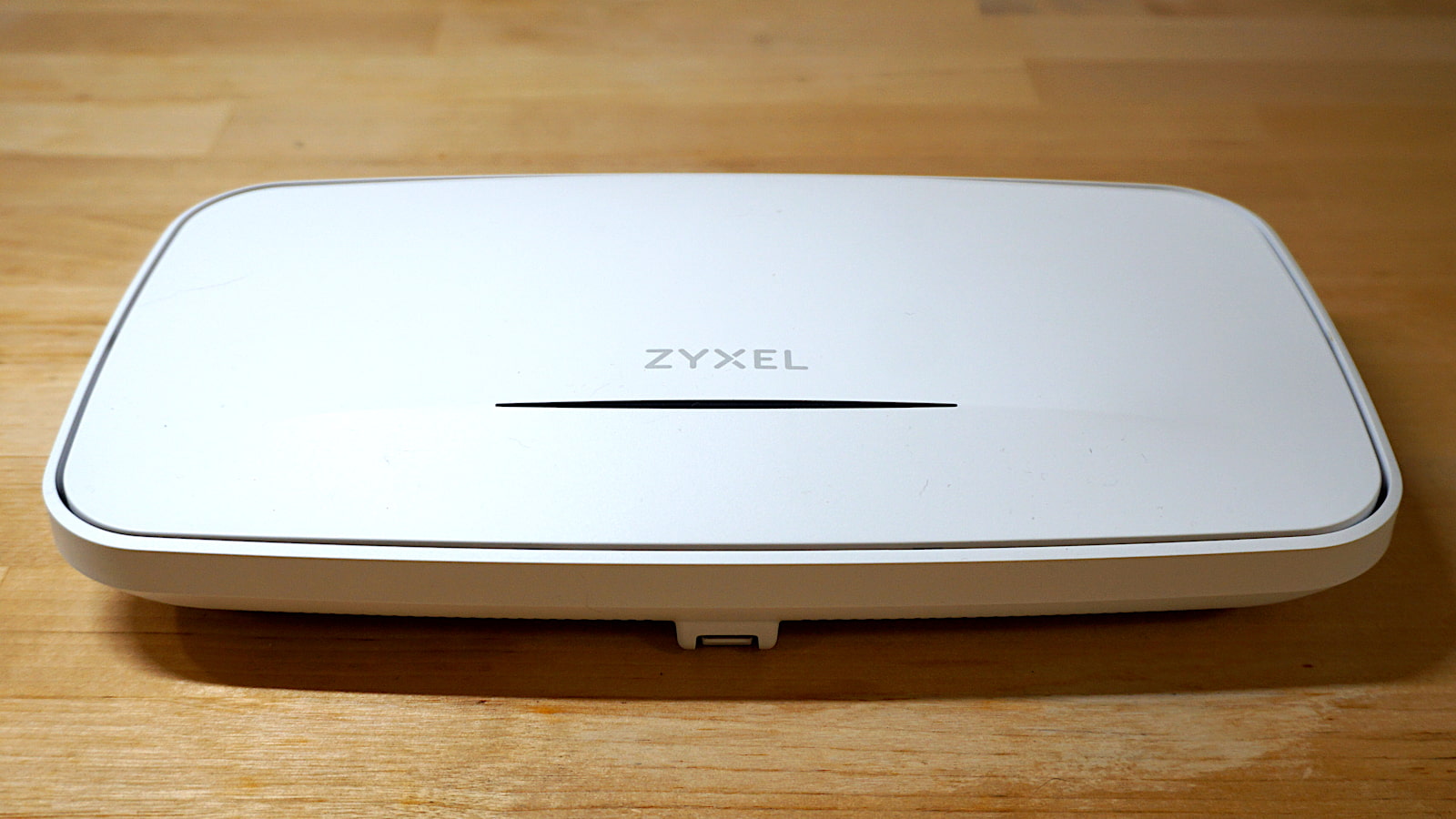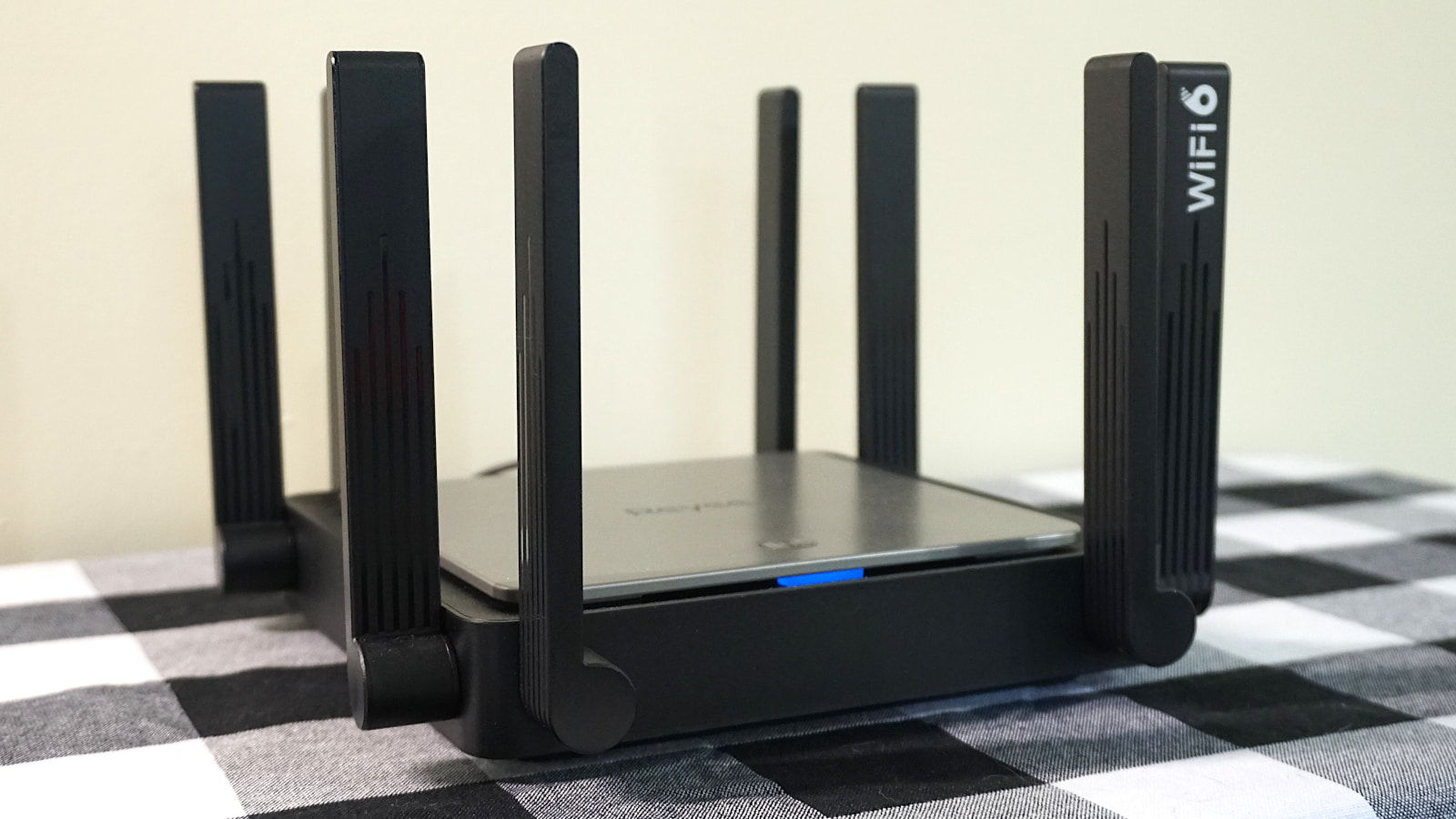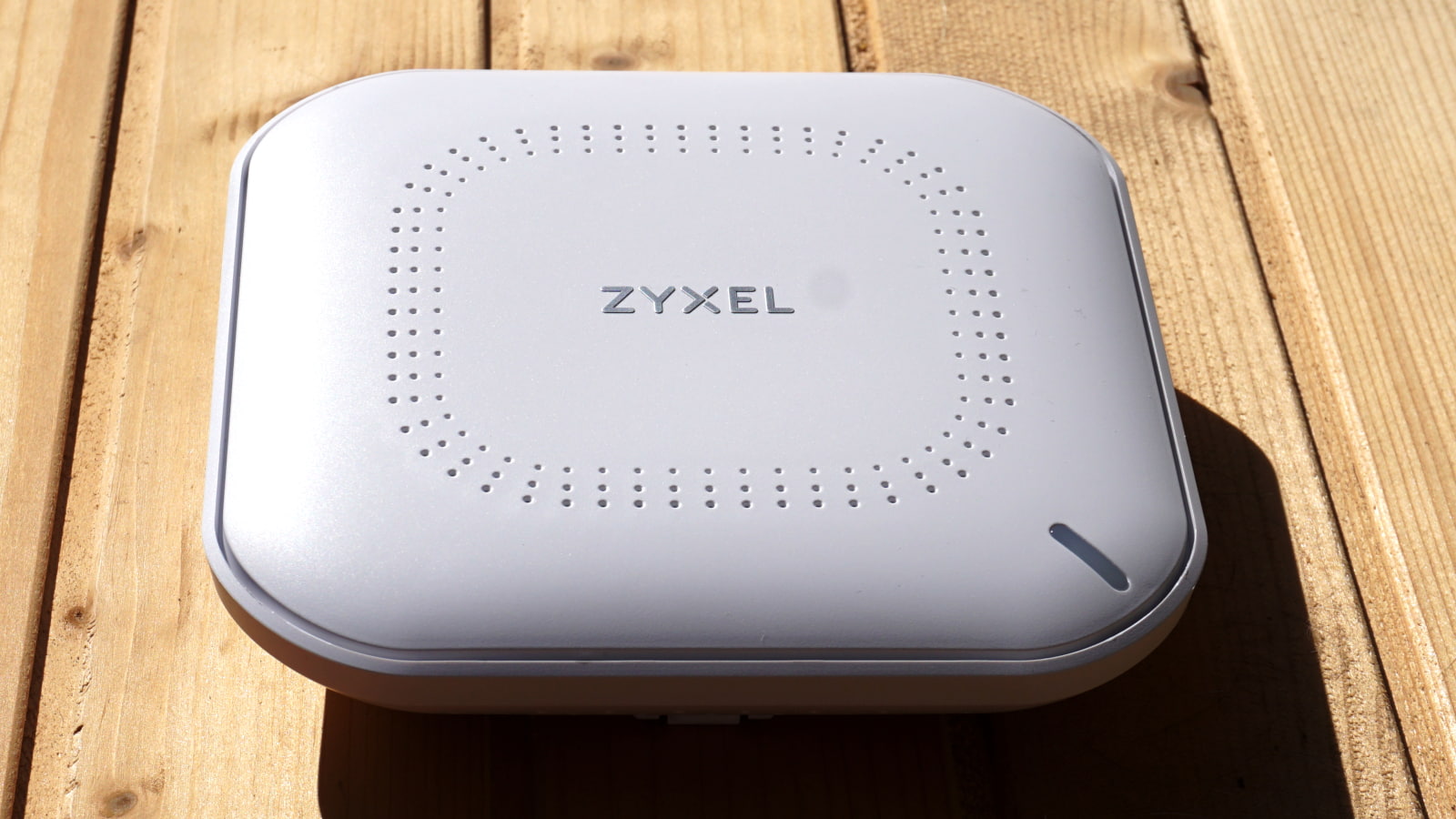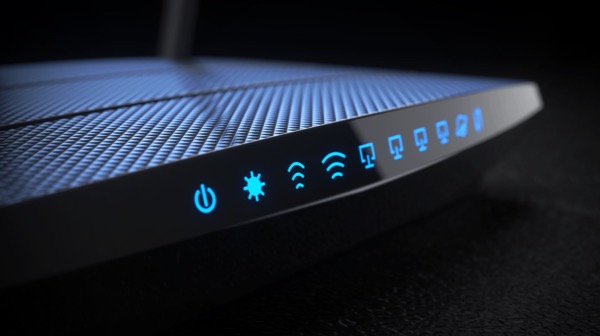Best Cable Modems 2024
Stop paying equipment rental fees with these pro picks for cable internet.
Dec 20, 2023 | Share
Equipment Guides
-
Best overallMotorola MB8611
- $142.40*
- Multigig speeds
- 2.5 Gbps Ethernet
- No Android app
-
Best for budgetsNETGEAR CM500
- $59.99*
- Great price
- Decent speeds
- No DOCSIS 3.1
-
Best for gamersNETGEAR Nighthawk CM2000
- $295.00*
- Multigig speeds
- Gamer design
- High price
-
Best multigig alternativeARRIS SURFboard SB8200
- $138.98*
- Multigig speeds
- Link aggregation
- No 2.5 Gbps port
-
Best comboARRIS SURFboard G36
- $279.00*
- Multigig speeds
- Wi-Fi 6
- High price
Amazon.com prices (as of 12/20/23 at 13:49 MST). View full disclaimer.
Our pick: Which cable modem is best?
Let’s get real here. Modems aren’t flashy. Modems aren’t cool. They’re boring little devices that do nothing but add and remove Ethernet-ready data to radio waves shooting through your cable internet connection. Selecting the “best” of them is like choosing your favorite pile of hay. But if we absolutely must pick one, the Motorola MB8611 is a good choice for any cable internet plan.
Want more modem/router combo options?
We list the Motorola MT8733 in this roundup, but you are welcome to check out our other suggestions for the best modem/router combos you can buy from ARRIS, Motorola, and NETGEAR.
The 5 best cable modems
- Best overall: Motorola MB8611
- Best for budgets: NETGEAR CM500
- Best for gamers: NETGEAR Nighthawk CM2000
- Best multigig alternative: ARRIS SURFboard SB8200
- Best combo: ARRIS SURFboard G36
Compare cable modem specs and features
| Model | Channel config. | WAN speed | Price | Order online | |
|---|---|---|---|---|---|
| Best overall | Motorola MB8611 | 32×8 2×2 | 2,500 Mbps | $142.40 | View on Amazon |
| Best for budgets internet | NETGEAR CM500 | 16×4 | 1,000 Mbps | $59.99 | View on Amazon |
| Best for gamers | NETGEAR Nighthawk CM2000 | 32×8 2×2 | 2,500 Mbps | $295.00 | View on Amazon |
| Best multigig alternative | ARRIS SURFboard SB8200 | 32×8 2×2 | 2,000 Mbps | $138.98 | View on Amazon |
| Best combo | ARRIS SURFboard G36 | 32×8 2×2 | 2,500 Mbps | $279.00 | View on Amazon |
Amazon.com prices (as of 12/20/23 at 13:49 MST). View full disclaimer.
What should you look for in a cable modem?
First, check the modem’s specification and channel configuration. Both dictate the modem’s maximum speed in each direction. DOCSIS 4.0 is the latest spec supporting download speeds up to 10,000 Mbps. Can we say KAPOW!?!
Also, check the modem’s Ethernet port. You don’t want a modem with a Gigabit Ethernet port if you have a 1,200 Mbps cable internet plan. Sure, the router may support a billion downstream and upstream channels, but the Ethernet port dictates the modem’s maximum output to your home network.
Best overall—Motorola MB8611
$142.40*
Specs:
- DOCSIS 3.1 2×2
- DOCSIS 3.0 32×8
- Max download speed: 2,500 Mbps
- Max upload speed: 800 Mbps
- Max WAN speed: 2,500 Mbps
Amazon.com prices (as of 12/20/23 at 13:49 MST). View full disclaimer.
Motorola is one of the tried-and-true brands regarding cable modems, so we’re not surprised the MB8611 is one of the most popular cable modems sold today.
Motorola’s big callout is Active Queue Management, which is a feature in the DOCSIS 3.1 spec. It reduces latency by managing the transmission between the modem and your cable internet provider’s terminal. CableLabs provides a good explanation of how it works for more information.
Other notable ingredients include ruggedized lightning and power surge circuits and a speedy 2.5 Gbps WAN port. The latter makes this modem compatible with all current cable internet speeds—including the newer 1.2 Gbps connections.
Works with: Astound Broadband, Cox, Mediacom, Optimum, Sparklight, Spectrum, WOW!, and Xfinity.
 Pros:
Pros:
- Multigig speeds
- 2.5 Gbps Ethernet
 Cons:
Cons:
- No Android app support
Best for budgets—NETGEAR CM500
$59.99*
Specs:
- DOCSIS 3.1 16×4
- Max download speed: 686 Mbps
- Max upload speed: 124 Mbps
- Max WAN speed: 1,000 Mbps
Amazon.com prices (as of 12/20/23 at 13:49 MST). View full disclaimer.
NETGEAR is another high-profile modem manufacturer, but the CM500 is about as humdrum as you can get in a cable modem. It doesn’t support DOCSIS 3.1, and its channel count is lower than the others on this list, so the most you’ll get for download speed is 686 Mbps.
But if you’re on a budget and don’t intend to get a plan faster than 600 Mbps anytime soon, the CM500 is the modem for you. Satisfied customers score it a 4.6 out of 5 on the product page, citing an easy setup, great performance, and great customer service.
Works with: Cox, Mediacom, Optimum, Sparklight, Spectrum, and Xfinity.
 Pros:
Pros:
- Great low price
- Decent cable speeds
 Cons:
Cons:
- No DOCSIS 3.1 support
Best for gamers—NETGEAR Nighthawk CM2000
$295.00*
Specs:
- DOCSIS 3.1 2×2
- DOCSIS 3.0 32×8
- Max download speed: 2,500 Mbps
- Max upload speed: 800 Mbps
- Max WAN speed: 2,500 Mbps
Amazon.com prices (as of 12/20/23 at 13:49 MST). View full disclaimer.
NETGEAR’s Nighthawk CM2000 seems no different than our top pick, Motorola’s MB8611. Both support download speeds up to 2.5 Gbps and include a 2.5 Gbps Ethernet port. That means you need a router with an identical WAN port to see the blazing speeds.
But the CM2000’s design makes it stand out against Motorola’s router. It has a cool LED strip along the sides and an angular shape that echoes a similar blueprint used with the Nighthawk routers. Plus, NETGEAR says the CM2000 works best with its Nighthawk routers, but you can connect any model, even if it doesn’t have a multigig WAN port.
Works with: Cox, Mediacom, Optimum, Sparklight, Spectrum, and Xfinity.
 Pros:
Pros:
- Multigig speeds
- Cool gamer design
 Cons:
Cons:
- High price
Best multigig alternative—ARRIS SURFboard SB8200
$138.98*
Specs:
- DOCSIS 3.1 2×2
- DOCSIS 3.0 32×8
- Max download speed: 2,500 Mbps
- Max upload speed: 800 Mbps
- Max WAN speed: 2,000 Mbps
Amazon.com prices (as of 12/20/23 at 13:49 MST). View full disclaimer.
ARRIS is a well-known cable modem manufacturer used by most cable internet providers. If you ever leased a modem, chances are ARRIS built it. For you, that means great performance and high reliability.
We chose the SB8200 for cable internet subscribers who already own a router that doesn’t have a 2.5 Gbps WAN port but does support link aggregation. Typically you can pair a router’s WAN and LAN 1 ports for a 2 Gbps connection if link aggregation is present. Both Ethernet cables connect to the modem’s two Gigabit Ethernet ports.
Works with: Astound Broadband, Cox, Mediacom, Optimum, Sparklight, Spectrum, WOW!, Xfinity, and six other providers.
 Pros:
Pros:
- Multigig speeds
- Link aggregation support
 Cons:
Cons:
- No 2.5 Gbps Ethernet port
Best combo—ARRIS SURFboard G36
$279.00*
Specs:
- DOCSIS 3.1 2×2
- DOCSIS 3.0 32×8
- Max download speed: 2,500 Mbps
- Max upload speed: 800 Mbps
- Max Wi-Fi throughput: 3,000 Mbps
- 4 Gigabit Ethernet LAN ports
- 1 2.5 Gbps Ethernet LAN port
Amazon.com prices (as of 12/20/23 at 13:49 MST). View full disclaimer.
The ARRIS SURFboard G36 has you covered if you need an all-in-one solution. Need Wi-Fi? Check. Need fast wired connections? Check. Need lots of internet speed? You got that too, for a reasonable price.
The specs show the most you’ll get in wired speed is 2,500 Mbps. And don’t let the Wi-Fi throughout deceive you: most Wi-Fi 6 phones and tablets get around 830 Mbps in real-world speed at close range; laptops perhaps above 1,400 Mbps on a good day.
The G36 also includes four Gigabit Ethernet ports and one 2.5 Gbps port for your wired devices—the latter is ideal if you add an even better router with an identical WAN port.
Works with: Astound Broadband, Cox, Mediacom, Optimum, Sparklight, Spectrum, WOW!, Xfinity, and six other providers.
 Pros:
Pros:
- Multigig speeds
- Built-in Wi-Fi 6 router
 Cons:
Cons:
- High price
Cable modem specs and features
Cable modems are boring. They don’t have a cool features list like with computers and routers. They do one thing and one thing only: add and remove Ethernet-ready data to radio waves. Yawn.
But there are certain tidbits you should remember when you shop for a new cable modem.
DOCSIS version
Short for Data Over Cable Service Interface Specification, DOCSIS defines how a modem works on a network. The latest specification is DOCSIS 4.0, which enables download and upload speeds of 10 Gbps and 6 Gbps, respectively. It’s overkill at the time of this writing, so here’s a chart to give you an idea of what you need:
| DOCSIS version | Best for |
|---|---|
| 3.0 | 1,000 Mbps and slower |
| 3.1 | 1,000 Mbps and higher |
| 4.0 | 1,000 Mbps and higher |
| DOCSIS version | 3.0 |
| Best for | 1,000 Mbps and slower |
| DOCSIS version | 3.1 |
| Best for | 1,000 Mbps and higher |
| DOCSIS version | 4.0 |
| Best for | 1,000 Mbps and higher |
Channel count
Cable internet relies on vacant TV channels to deliver data. The more channels a modem can use, the more data you can download and upload in a second. Modems based on DOCSIS 3.0 combine (or bond) up to 32 channels for downloads and up to 8 channels for uploads. DOCSIS 3.1 supports the 32×8 channel configuration, but also uses wider OFDM and OFDMA channels to deliver more data.
WAN output
Nearly all modems have one Ethernet port that connects to a wired device, like a router or a computer. Generally, modems have a Gigabit Ethernet port with a real-world wired speed of 940 Mbps. So, if you have a 1 Gbps internet plan, you won’t get your plan’s full speed. Instead, you need a modem with a 2.5 Gbps Ethernet port for gigabit and faster plans.
You can also get a modem with two Gigabit Ethernet ports with link aggregation, but be sure your router supports it before you invest.
Shopping around for new internet?
Enter your zip code below to see which providers are available in your area.
Our verdict
As we said before, cable modems are boring little devices. No real standout features separate one from the other. Speed is generally the deciding factor, so if you have a 600 Mbps connection, you certainly don’t need a modem that supports 2,500 Mbps unless you plan to switch to a faster plan later.
But if you want to futureproof your internet connection right now, the Motorola MB8611 is a solid choice—until cable internet speeds surpass the modem’s 2,500 Mbps limit (and they will eventually).
FAQ about cable modems
What is a modem?
A modem is a device that adds and removes Ethernet-ready data to radio waves delivered across coax cable. That’s it. It doesn’t play games or display the weather or cook your pizza rolls. But without it, your home network cannot access the internet.
Do I need a router if I have a modem?
You don’t need a router if you have a gateway (modem/router combo), but you may need a router if you have a standalone modem. A router connects to the modem’s Ethernet port and distributes wired and wireless internet connections to your devices.
How does DOCSIS 3.1 enable more speed?
DOCSIS 3.0 bonds up to 32 channels for downloads and 8 channels for uploads (abbreviated as 32×8). Each one has the same modulation and a small guard band on each side to prevent overlap.
DOCSIS 3.1 eliminates the need for guard bands between channels, freeing up bandwidth. Thin multiple channels become subcarriers with different modulations in one large channel shared by other modems. The typical setup is two downstream OFDM channels and two upstream OFDMA channels.
Disclaimer
Product prices and availability are accurate as of the date/time indicated and are subject to change. Any price and availability information displayed on Amazon.com at the time of purchase will apply to the purchase of this product. HighSpeedInternet.com utilizes paid Amazon links.
CERTAIN CONTENT THAT APPEARS ON THIS SITE COMES FROM AMAZON. THIS CONTENT IS PROVIDED ‘AS IS’ AND IS SUBJECT TO CHANGE OR REMOVAL AT ANY TIME.
Author - Kevin Parrish
Kevin Parrish has more than a decade of experience working as a writer, editor, and product tester. He began writing about computer hardware and soon branched out to other devices and services such as networking equipment, phones and tablets, game consoles, and other internet-connected devices. His work has appeared in Tom’s Hardware, Tom's Guide, Maximum PC, Digital Trends, Android Authority, How-To Geek, Lifewire, and others. At HighSpeedInternet.com, he focuses on network equipment testing and review.
Editor - Cara Haynes
Cara Haynes has been editing and writing in the digital space for seven years, and she's edited all things internet for HighSpeedInternet.com for five years. She graduated with a BA in English and a minor in editing from Brigham Young University. When she's not editing, she makes tech accessible through her freelance writing for brands like Pluralsight. She believes no one should feel lost in internet land and that a good internet connection significantly extends your life span.
